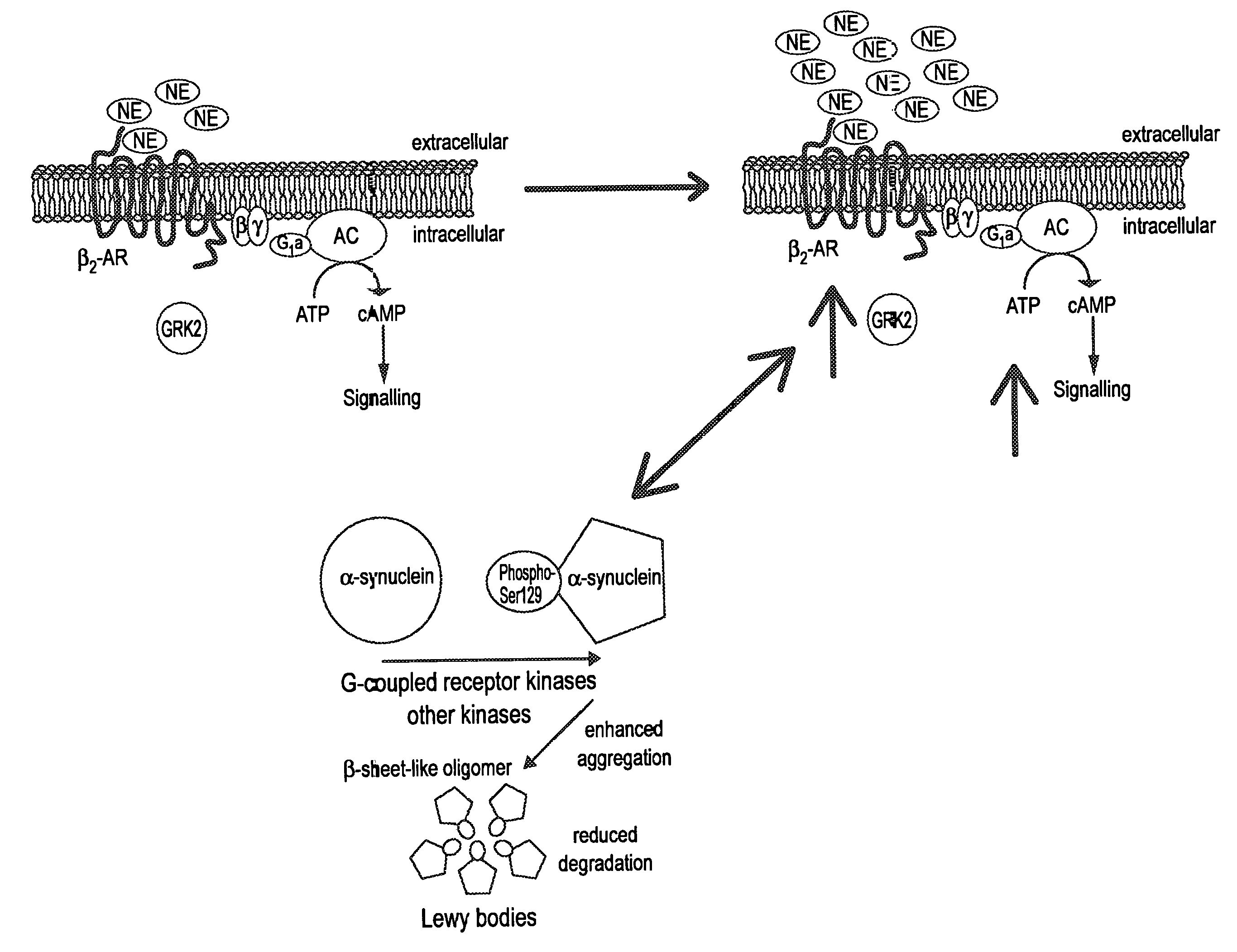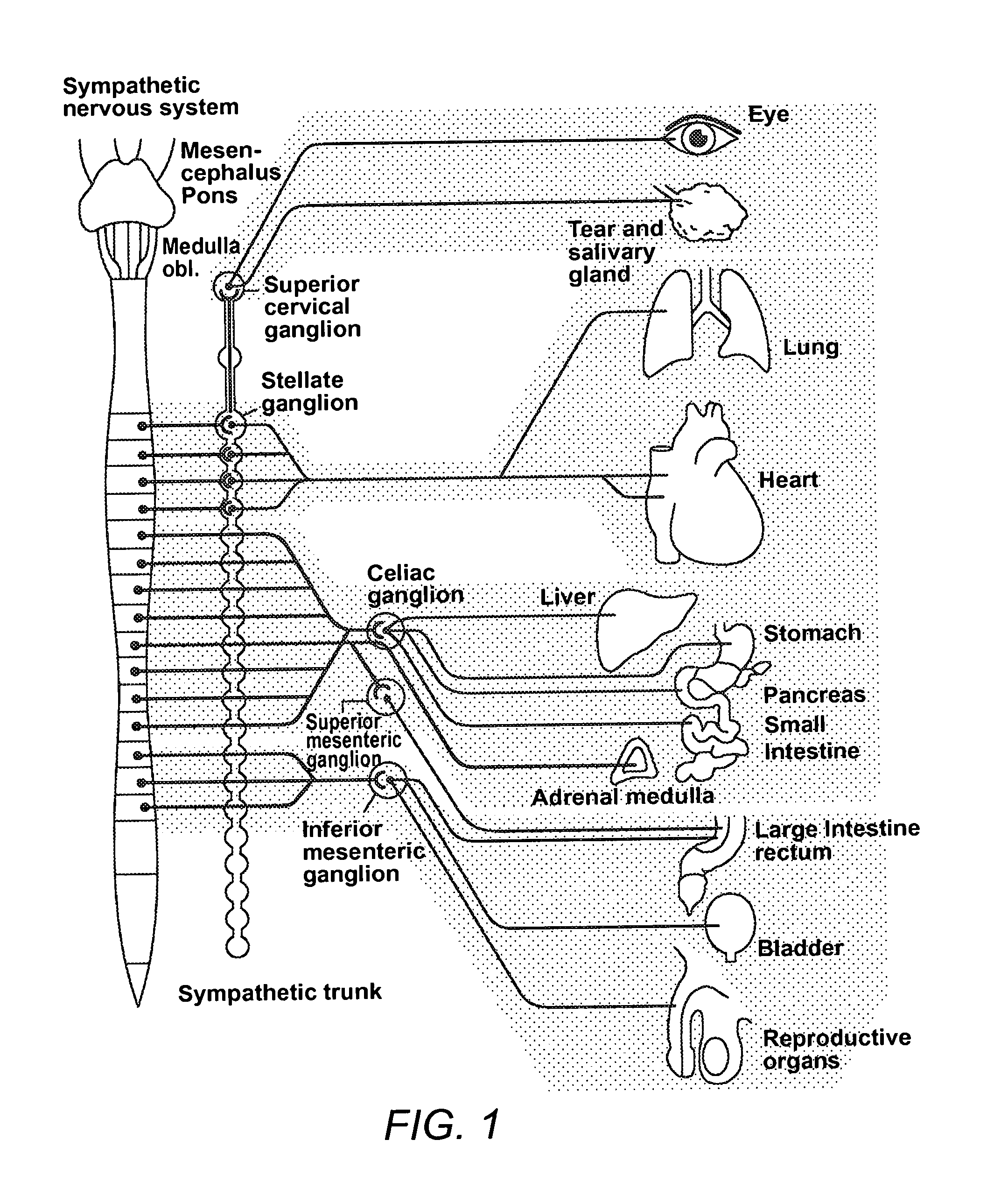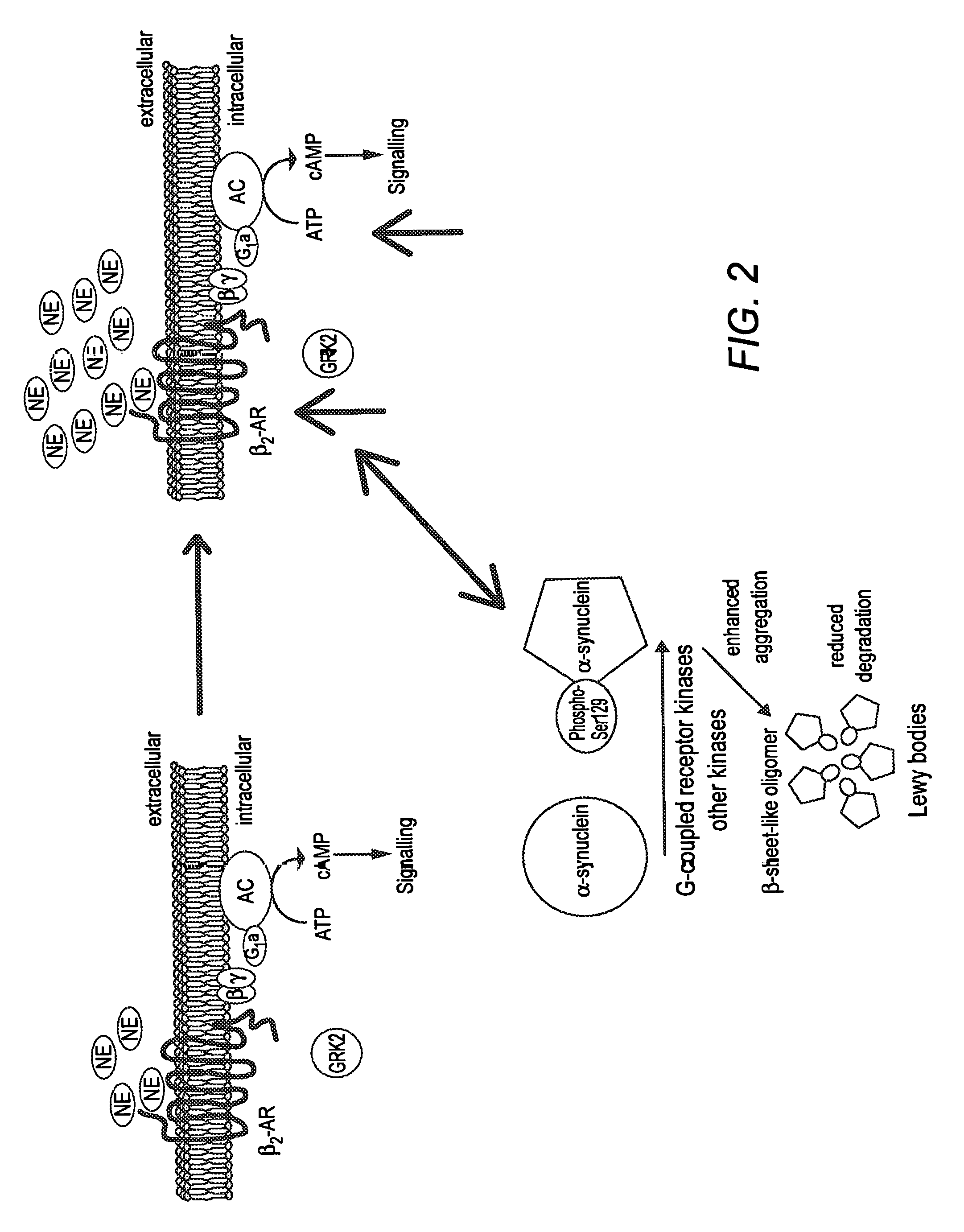Adrenoceptors antagonists for the prevention and treatment of neurodegenerative conditions
- Summary
- Abstract
- Description
- Claims
- Application Information
AI Technical Summary
Benefits of technology
Problems solved by technology
Method used
Image
Examples
example 1
Background
[0066]By way of additional background, iPD is a non-hereditary, chronic, and progressive neurodegenerative disorder of unknown etiology, characterized by the presence of bradykinesia (slowness of movements) associated with tremor at rest and / or muscle rigidity. iPD is typically associated with a significant loss of dopaminergic neurons in the substantia nigra pars compacta (SNpc). The SNpc provides dopaminergic innervation to the striatum, a brain structure mainly involved in the control of movements. It is estimated that the appearance of iPD motor symptoms does not occur until 50-80% of the dopaminergic neurons are lost.
[0067]The prevalence of iPD is approximately 1% in individuals over 65 years old. It is estimated that iPD affects almost 1.5 million people in the United States alone. In addition to characteristic motor symptoms, iPD is characterized by a number of “non-motor” symptoms, which add to the overall morbidity burden. Importantly, non-motor features may prece...
example 2
Current Treatment of Motor and Non-Motor Symptoms of iPD
[0071]As indicated above, despite all advances, iPD continues to be a progressive disorder for which no interventions are available to modify disease progression. Current treatment of iPD is only symptomatic and based mainly on dopaminergic supplementation, which temporarily improves motor impairment and quality of life. In certain embodiments, each of the following traditional treatment strategies could be used in conjunction with one or more of the inventive methods.
Dopaminergic Supplementation
[0072]Three main classes of dopaminergic agents are considered as first-line symptomatic therapies: monoamine oxidase B (MAO-B) inhibitors, dopamine agonists (DAs), and levodopa. MAO-B inhibitors (both rasagiline and selegiline) are a first line option for initial monotherapy in patients with mild disability. Although there is a suggestion that MAO-B inhibitors might be neuroprotective, there is no unequivocal proof for disease modifica...
example 3
Rationale for Therapeutic Approach
[0076]As indicated above, iPD is currently considered a progressive neurodegenerative disease caused by the unexplained and premature death of dopaminergic neurons in the substantia nigra pars compacta (SNc), which are classically found to accumulate abnormal protein aggregates, rich in α-synuclein and ubiquitin, called Lewy bodies. However, a number of frequent, well-documented clinical and pathological features of iPD are not explained by the dopaminergic theory centered on the degeneration of the SNc. Numerous non-motor symptoms, which are levodopa unresponsive and unrelated to dopaminergic mechanisms, frequently occur in iPD, often causing more disability than the classical (dopaminergic) motor symptoms. Importantly, several non-motor symptoms appear to precede motor symptoms by many years, even up to two decades or more. In addition, Lewy bodies, the pathological marker of iPD, are not exclusively of the SNC, but have been found in many other c...
PUM
| Property | Measurement | Unit |
|---|---|---|
| Cell angle | aaaaa | aaaaa |
Abstract
Description
Claims
Application Information
 Login to View More
Login to View More - R&D
- Intellectual Property
- Life Sciences
- Materials
- Tech Scout
- Unparalleled Data Quality
- Higher Quality Content
- 60% Fewer Hallucinations
Browse by: Latest US Patents, China's latest patents, Technical Efficacy Thesaurus, Application Domain, Technology Topic, Popular Technical Reports.
© 2025 PatSnap. All rights reserved.Legal|Privacy policy|Modern Slavery Act Transparency Statement|Sitemap|About US| Contact US: help@patsnap.com



